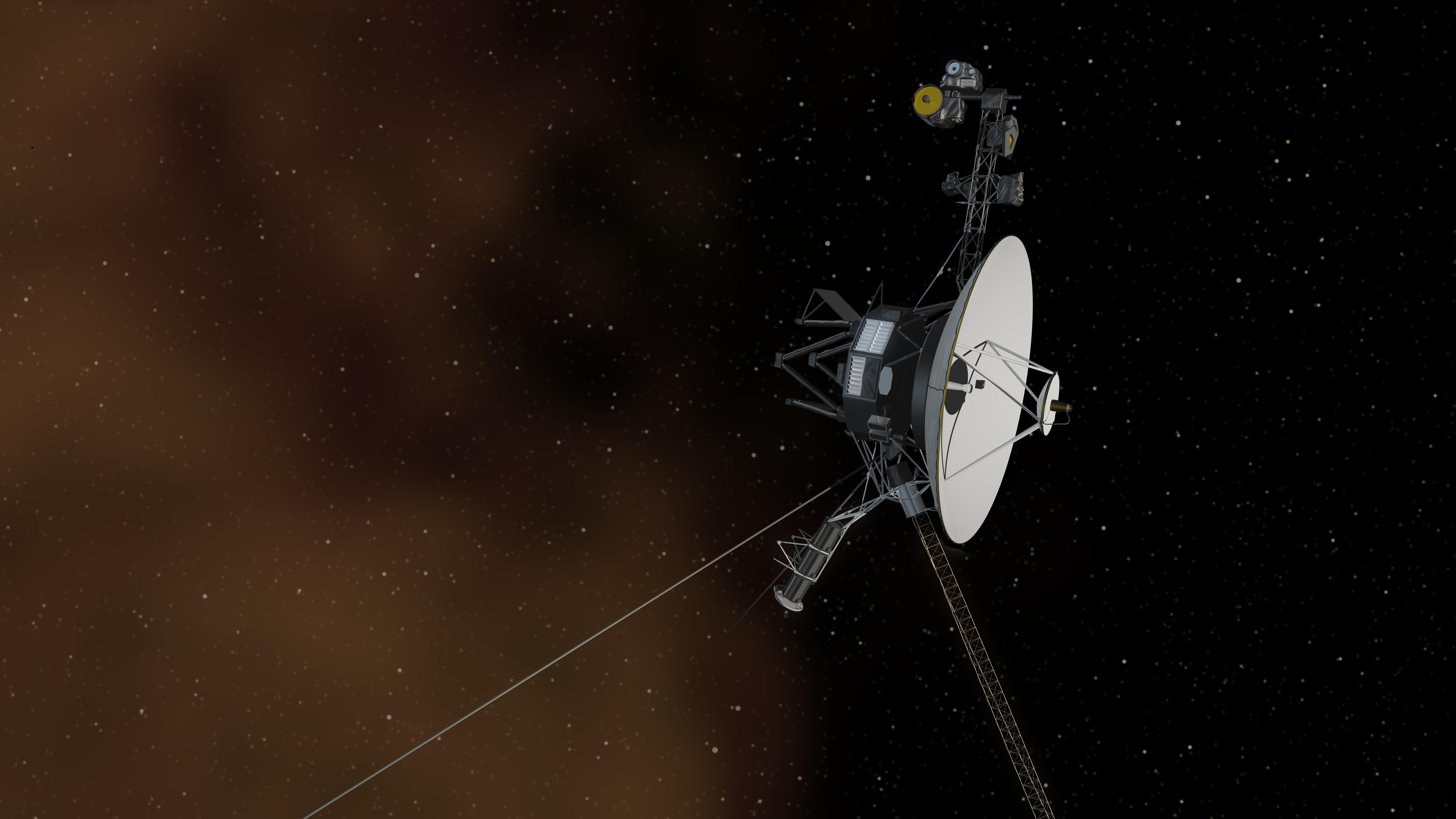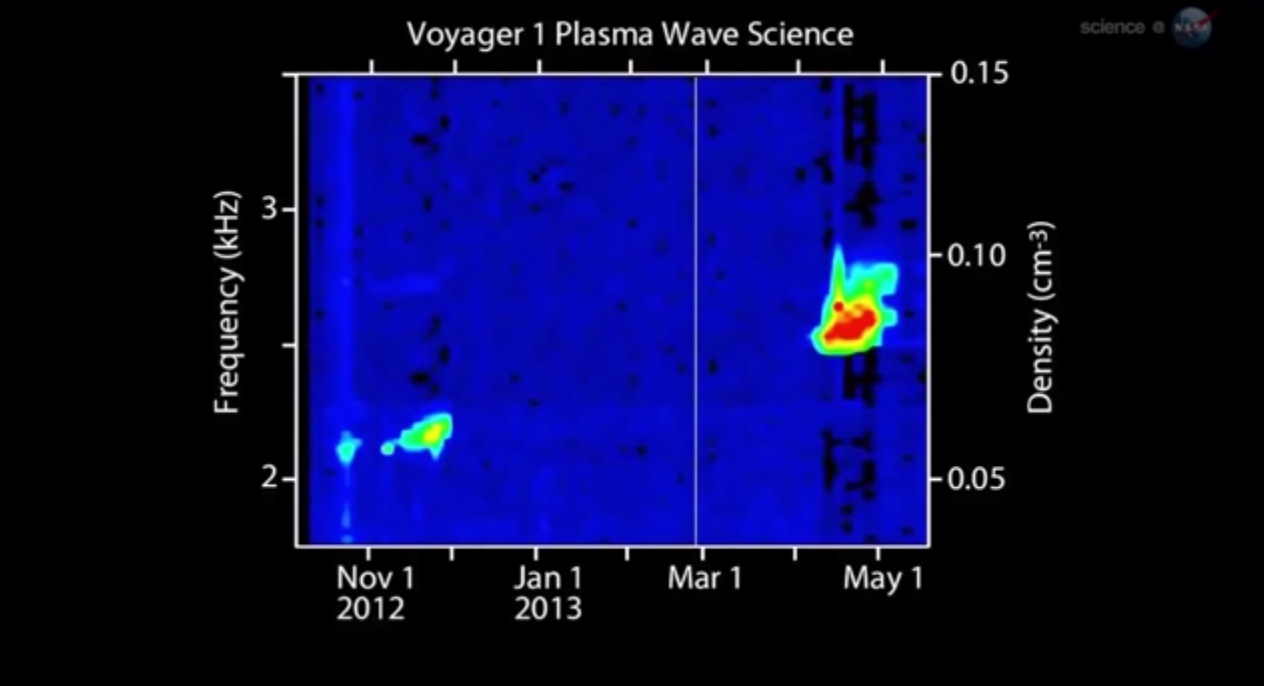How NASA's Voyager 1 Probe Recorded Sounds of Interstellar Space (Video)

Beyond the border of interstellar space, the distant Voyager 1 spacecraft called back to Earth earlier this year with noises from its new environment. It's true that the void of space does not carry sound — there's no gas or other substance to transmit the waves — but the signal Voyager detected can be played back at frequencies the human ear can understand.
NASA announced in September that Voyager 1 had left the heliosphere in August 2012. The heliosphere is a sheath of magnetic influence that emanates from the sun and expands through a stream of charged particles called the solar wind.
At the press conference, Don Gurnett, the principal investigator for Voyager 1's plasma wave science instrument, demonstrated a series of sounds the instrument had picked up.
"Strictly speaking, the plasma wave instrument does not detect sound. Instead, it senses waves of electrons in the ionized gas or 'plasma' that Voyager travels through," NASA stated in a statement. These waves, however, do take place at frequencies that humans can detect.
"We can play the data through a loudspeaker and listen," Gurnett, a physics professor at the University of Iowa, said in the statement. "The pitch and frequency tell us about the density of gas surrounding the spacecraft." [Hear What Voyager 1 Detected]
Within the heliosphere, the sounds had a frequency of about 300 Hz. Once Voyager left the scene, the frequency jumped higher, to between 2 and 3 kHz, "corresponding to denser gas in the interstellar medium," according to the NASA release.
There have been at least two verified instances of these tones: October to November 2012, and April to May 2013. Both occurred after huge coronal mass ejections (material from the sun) bumped up plasma activity around Voyager 1. There was a lag before scientists discovered the recordings because the data is only played back every three to six months, NASA said, and more time is required to interpret the results.
Breaking space news, the latest updates on rocket launches, skywatching events and more!
Gurnett further speculated that "shock fronts" from beyond the solar system could be tearing through interstellar space and disturbing the plasma surrounding Voyager 1. He will be listening for any evidence of this activity in future recordings from humanity's furthest spacecraft, he said.
Follow Elizabeth Howell @howellspace, or SPACE.com @Spacedotcom. We're also on Facebook and Google+. Original article on SPACE.com.

Elizabeth Howell (she/her), Ph.D., was a staff writer in the spaceflight channel between 2022 and 2024 specializing in Canadian space news. She was contributing writer for Space.com for 10 years from 2012 to 2024. Elizabeth's reporting includes multiple exclusives with the White House, leading world coverage about a lost-and-found space tomato on the International Space Station, witnessing five human spaceflight launches on two continents, flying parabolic, working inside a spacesuit, and participating in a simulated Mars mission. Her latest book, "Why Am I Taller?" (ECW Press, 2022) is co-written with astronaut Dave Williams.

